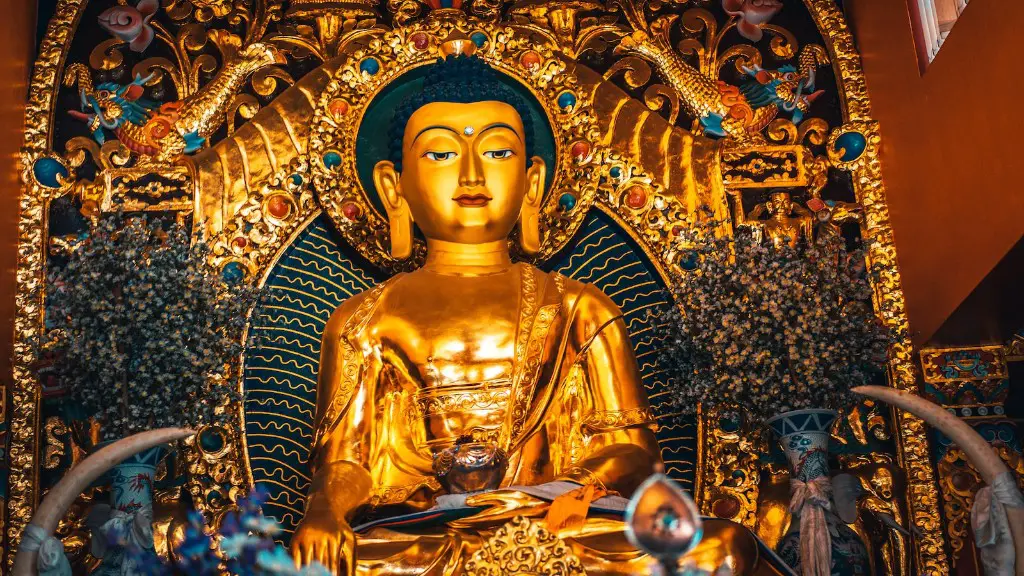Hinduism is a diverse religious tradition with numerous practices and beliefs. One practice that has been used for centuries is cremation. In the Hindu tradition, cremation is a way of returning the physical body of a person who has passed away to the earth from which the body was formed. Cremation is widely seen as an essential ritual for Hindus, which helps the deceased’s spirit to journey peacefully to the spiritual realm. Although some other religions may have similar practices, cremation in Hinduism is a distinct ritual.
The main reason why Hindus cremate their dead is to ensure that their spirit remains untainted before it moves on to the spiritual realm. They believe that after a person has finished their earthly duties, their physical body has served its purpose and must be given back to the earth. This act is seen as a way of following the law of karma, which holds that all actions have consequences and that our deeds in life will be rewarded or punished in the afterlife. Cremation is seen as a way of avoiding retribution in the afterlife.
In addition, cremation is a way of symbolically accepting the cycle of life and death. Hindus believe that death is a natural process of life and should be accepted as part of it. Cremation is a way of accepting the permanence of death rather than attempting to hold on to the physical remains of a loved one.
Cremation is also seen as a sign of respect for the dead. Hindus treat their dead with the same reverence and respect that is given to the living. Cremation is a way of ensuring that the dead are given the same respect that they were given when they were alive, and that their remains are respected as an extension of themselves.
In Hinduism, cremation is an important ritual that is seen as a way of honoring the dead and ensuring their spirit moves on peacefully to the spiritual realm. The ritual helps to ensure that the spirit’s journey is untainted and that they are given the same respect as when they were alive. Cremation is an important ritual that is deeply rooted in Hinduism.
Direct Processes Involved With Cremation in Hinduism
Within the Hindu faith, the direct processes involved with cremation must be done properly and with utmost respect. First and foremost, a Hindu priest will conduct a ceremony to allow the soul—or atman—of the deceased to pass on to the spiritual realm. This ceremony, called the last rites or Antyesti, includes prayers and offerings. The body of the deceased is then prepared for cremation by bathing it, anointing it with oil, and wrapping it in stricted white cloth. During the procession from the home to the cremation ground, the body is carried on a bamboo stretcher and respected members of the family accompany it.
Once the body is brought to the cremation ground, the family builds a pyre with logs of sandalwood and other fragrant materials. According to scripture, this type of funeral pyre is to be constructed in such a way that the smoke rises straight up and doesn’t create any obstruction. The body is then placed on the pyre, the family members offer flowers and perform the last rites. The fire is lit and the family watches with reverence as the body is consumed by the flames.
Significance of Cremation in Hinduism
One of the most important aspects of Hinduism is the belief in the cycle of life and death. Cremation is an essential part of this cycle, as it symbolizes that the physical body of the deceased is returning to the earth from which it was formed. Cremation is also seen as a way of ensuring that the spirit of the deceased is untainted and will make its journey peacefully to the spiritual realm.
Cremation also allows for an individual’s loved ones to show their respects and honor their memory. The funeral pyre is a symbolic representation of the individual’s life and accomplishments, and it is a way of honoring the individual’s life and memory.
Additionally, cremation aims to teach those left behind that death is an inevitable aspect of life, and to accept that it must be accepted rather than resisted. It is also a reminder to treat the living with the same respect and reverence that you would give when they have passed.
Other Rituals That Follow Cremation in Hinduism
After the cremation has been completed, there are several additional rituals that need to be performed. One of the most important of these is the offering of water to the deceased’s spirit. This is believed to help the spirit transition to the spiritual realm. After this ritual is complete, family members will often release a boat, symbolizing the spirit’s journey, into a river or lake. Additionally, family members will often create shrines or build memorials in honor of the deceased.
Another ritual that follows cremation is the food that is served to the mourners. It is traditional for food to be cooked for those who served as pallbearers, as well as for those who witnessed the cremation. This food is symbolic of the care and concern of those who were present, and serves as a way of expressing support for the family.
The last rite that is traditionally performed after cremation is the scattering of the ashes. While this is not essential, it has become a common practice for Hindus, and serves as a way of paying one last homage to the beloved departed. The ashes are often scattered in a river or the sea, symbolizing that the deceased’s spirit has been released into the universe.
Reusing Cremation Ashes
In Hinduism, cremation ashes are also sometimes used to create memorials. For example, the ashes may be mixed with clay to create a small figure in the likeness of the deceased, called an Abir. These figures are often placed in temples, gardens, or other places where they can be venerated and remembered. Additionally, ashes can be used to create memorial jewelry and other keepsakes that serve as a lasting reminder of the individual’s life and legacy.
Cremation in Hinduism is a deeply symbolic and important ritual that helps the spirit of the deceased make its journey peacefully to the spiritual realm. The ritual is seen as a way of honoring the dead, respecting the cycle of life and death, and allowing for an individual’s loved ones to express their respects for their memory.
Environmental Effects of Cremation
While traditional Hindu cremation is rooted in a range of religious and cultural beliefs, it is also clear that the process of cremation can have significant environmental impacts. One major problem with cremation is the emission of toxic substances into the atmosphere, such as carbon monoxide, dioxins, and other air pollutants. Additionally, the burning of the body itself can require a considerable amount of energy, adding to the carbon footprint of cremation.
Furthermore, the use of chemical embalming fluids, as well as other materials used during the process of embalming, can also have a significant environmental impact. These chemicals can contaminate the groundwater and have an adverse effect on the environment.
While traditional Hindu cremation has numerous cultural and religious benefits, it is important to be mindful of the environmental consequences of this practice. It is essential that due consideration is given to reducing the environmental impact of cremation, for example, by selecting greener funeral rites, such as green burial, or by opting for cremation methods that are more eco-friendly.
Alternatives to Cremation
Despite the cultural and religious significance of cremation in Hinduism, it is important to be aware that there are other options available to those who are looking to say goodbye to a beloved one with dignity and respect. One alternative to cremation is burial, which is becoming increasingly popular among Hindus.
Burial requires much less energy and resources than cremation and is also more eco-friendly. Additionally, it can be a relatively efficient and inexpensive option, with minimal impact on the environment.
Another way to pay respect to the deceased is by using a bio-degradable urn and planting a memorial tree or garden. This way, the deceased’s remains can continue to provide sustenance for the living even after death. Similarly, memorial diamonds, which are made from human cremated remains, can also be a nice way of honoring the deceased.
For those who are looking for alternatives to traditional cremation, it is important to think carefully about the environmental impacts of the different options. Additionally, it is important to consider the cultural and religious implications of the chosen option and determine if it is a respectful and meaningful way to honor the deceased.

